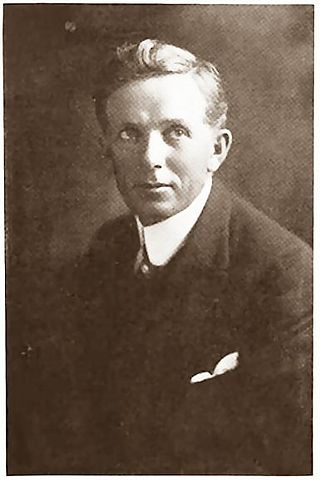Related Research Articles

Robert L. Surtees was an American cinematographer who won three Academy Awards for the films King Solomon's Mines, The Bad and the Beautiful and the 1959 version of Ben-Hur. Surtees worked at various studios, including Universal, UFA, Warner Brothers, and MGM, lighting for notable directors Howard Hawks, Mike Nichols, and William Wyler, gaining him a reputation as one of the most versatile cinematographers of his time.

James Wesley Horne was an American actor, screenwriter, and film director.

George H. Melford was an American stage and film actor and director. Often taken for granted as a director today, the stalwart Melford's name by the 1920s was, like Cecil B. DeMille's, appearing in big bold letters above the title of his films.

Arthur Charles Miller, A.S.C. was an American cinematographer. He was nominated for the Oscar for Best Cinematography six times, winning three times: for How Green Was My Valley in 1941, The Song of Bernadette in 1944, and Anna and the King of Siam in 1947.
Linwood G. Dunn, A.S.C. was an American pioneer of visual special effects in motion pictures and an inventor of related technology. Dunn worked on many films and television series, including the original 1933 King Kong (1933), Citizen Kane (1941), and Star Trek (1966–69).

Noble Johnson, later known as Mark Noble, was an American actor and film producer. He appeared in films such as The Mummy (1932), The Most Dangerous Game (1932), King Kong (1933) and Son of Kong (1933).

Jungle Menace (1937) is the first serial released by Columbia Pictures.

Sally Long was an American dancer and actress.

Harry L. Fraser was an American film director and screenplay writer.
William Anton Gittinger, best known as William Steele, was an American actor of small roles in Westerns, particularly those of John Ford.
Joseph Walker, A.S.C. was an American cinematographer who worked on 145 films during a career that spanned 33 years.

George Michael Rosener was an American film actor and writer. He also wrote and acted in the Frank Buck serial Jungle Menace.
Sherman L. Lowe was an American screenwriter. He was a writer of the Frank Buck serial Jungle Menace.
George Martin Merrick was an American writer of the Frank Buck serial Jungle Menace.

Dallas M. Fitzgerald was an American motion picture director and producer, primarily in the silent era. He is also known as the writer of the Frank Buck film serial Jungle Menace.
Earl Carver Turner was a film editor of the Frank Buck serial Jungle Menace.
Keene Thompson was a story, scenario and screenwriter who worked in the film industry from 1920 to 1937.
Richard Fryer, born Morris Kolsky, was a British-born Hollywood cinematographer.
William Nobles was an American cinematographer.

Robert Kurrle, also known as Robert B. Kurrle, was an American cinematographer during the silent and early talking film eras. Prior to entering the film industry, he was already experimenting with aerial photography. Considered a very prominent cinematographer, even his early work received notice and praise from both critics and other industry professionals. The advent of sound film did not abate his continued rise, and he became the top director of photography at Warner Brothers by 1932.
References
- ↑ World War I draft registration card
- ↑ Lehrer, Steven (2006). Bring 'Em Back Alive: The Best of Frank Buck. Texas Tech University press. pp. x–xi. ISBN 0-89672-582-0.
- ↑ Eileen S. Quigley. International motion picture almanac, Volume 48. Quigley Publications, 1938
- ↑ Ray Morton. King Kong: The History of a Movie Icon from Fay Wray to Peter Jackson. Applause Theatre and Cinema Books (November 1, 2005)
- ↑ Mitchell no. 66 Camera (Priced at $148,200), http://www.christies.com/Lotfinder/lot_details.aspx?intObjectID=4813378